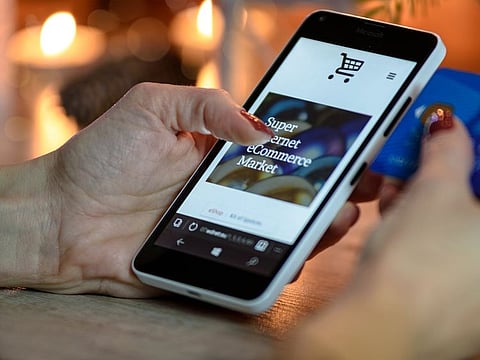Let tech take care of online wish fulfillment
In online grocery purchases, it can be point of difference in meeting shopper expectations

Online grocery shopping has morphed from a temporary necessity to a way of life. The results of reduced social contact in everyday life are already evident.
To meet rising online shopping demands, distribution centers and micro-fulfillment facilities are poised for rapid growth. At the same time, consumer expectations for frictionless online ordering and in-store pickup are increasing.
Efficient fulfillment solutions and processes are quickly becoming a competitive differentiator among grocery retailers to meet expectations. Those retailers with the best order fulfillment process and quality customer service will gain the upper hand.
But without the right technology, e-fulfillment is doomed to slowdowns and inventory problems that impact the entire supply chain and negatively affect a brand’s reputation. Here’s a closer look at how end-to-end retail technology solutions can make online grocery shopping easier — not just for the consumer, but for back-end fulfillment as well.
Smoother start to finish
Take the click-and-collect use case. When a customer places an order online, that order needs to be routed to an associate so that it can be fulfilled and picked up by the consumer. With the right tech solution in place, the entire click-and-collect workflow runs smoothly.
For example, associates equipped with multi-use mobile devices can speed up and streamline their processes. Once an order is placed, the device alerts the associate to fulfill, or pick, that order.
Images of the ordered items help the associate pick correctly. After the order is picked and bagged, the associate uses a mobile printer to label the order for the customer.
When the customer arrives, another notification alerts the associate to bring out the order. The device can also be used to process payments, scan coupons, and print receipts, helping to shorten curb-side pickup times.
Manage that inventory
Order fulfillment isn’t the only process that benefits from technology. With integrated retail software and analytics, inventory management becomes simpler too. When associates pick orders, inventory updates occur in real-time.
Grocers can then see which goods are selling in high volumes and with high velocity so they can automate the reordering of those goods and ensure they’re in stock. Analytics also help grocers identify shopper behaviors to better meet consumer needs - and expectations - during the shopping and ordering experience.
However, without technology, challenges can pile up and the fulfillment process can quickly fall apart. Manual, paper-based efforts lead to wasted time, errors, and inventory issues. For example, when a consumer order is completed online, it takes time to print out a copy of the order and find the associate who can fulfill it.
Slows it down
The associate has to then pick the order using only a paper list and doesn’t have access to images to help them search for specific items, which increases the risk of mistakes. The inventory doesn’t get updated right away, which could mean an item may be out of stock the next time an order is fulfilled.
When delays, errors, and out-of-stocks compound, consumers can quickly lose patience with a grocer and take their business elsewhere.
Improve now
It’s not easy to predict how the next crisis will affect grocery retailers. But with the pandemic keeping social distancing at the forefront of shopping behavior, it’s a good idea for grocers to implement a new strategy — one that helps them capitalize on online shopping while streamlining the supply chain.
With the right technology solution, grocers can speed up fulfillment workflows to ensure orders are fulfilled in a timely manner. By providing associates with the tools to confidently and correctly pick items and complete the order process while getting real-time information that helps keep inventory replenished to avoid out-of-stock items and disappointed customers, grocers will be well-positioned.
When fulfillment workflows are seamless, there’s little difference between the physical store and the digital one for customers.
- Mark Wheeler is Director of Supply Chain Solutions, Zebra Technologies.
Sign up for the Daily Briefing
Get the latest news and updates straight to your inbox







